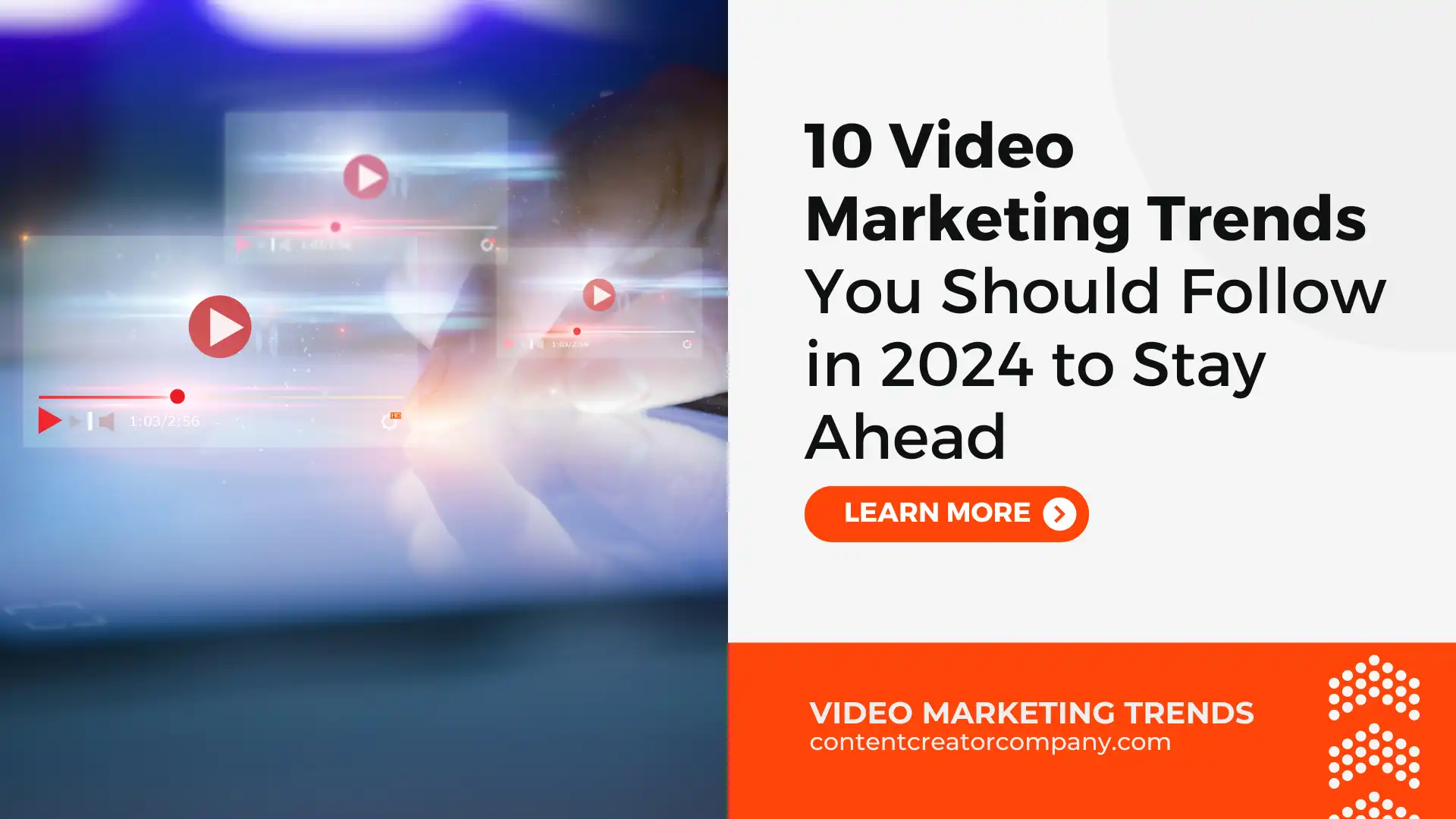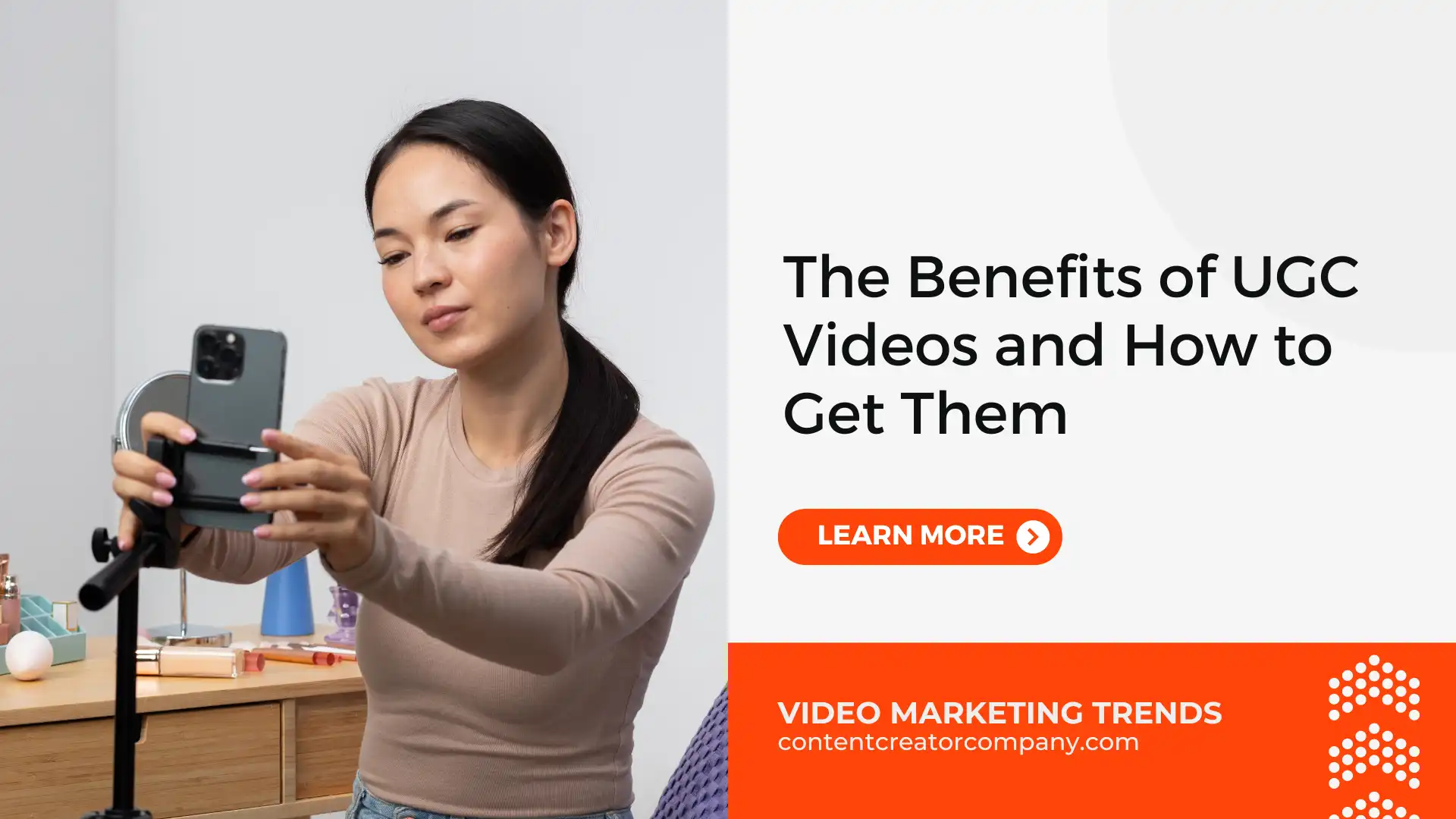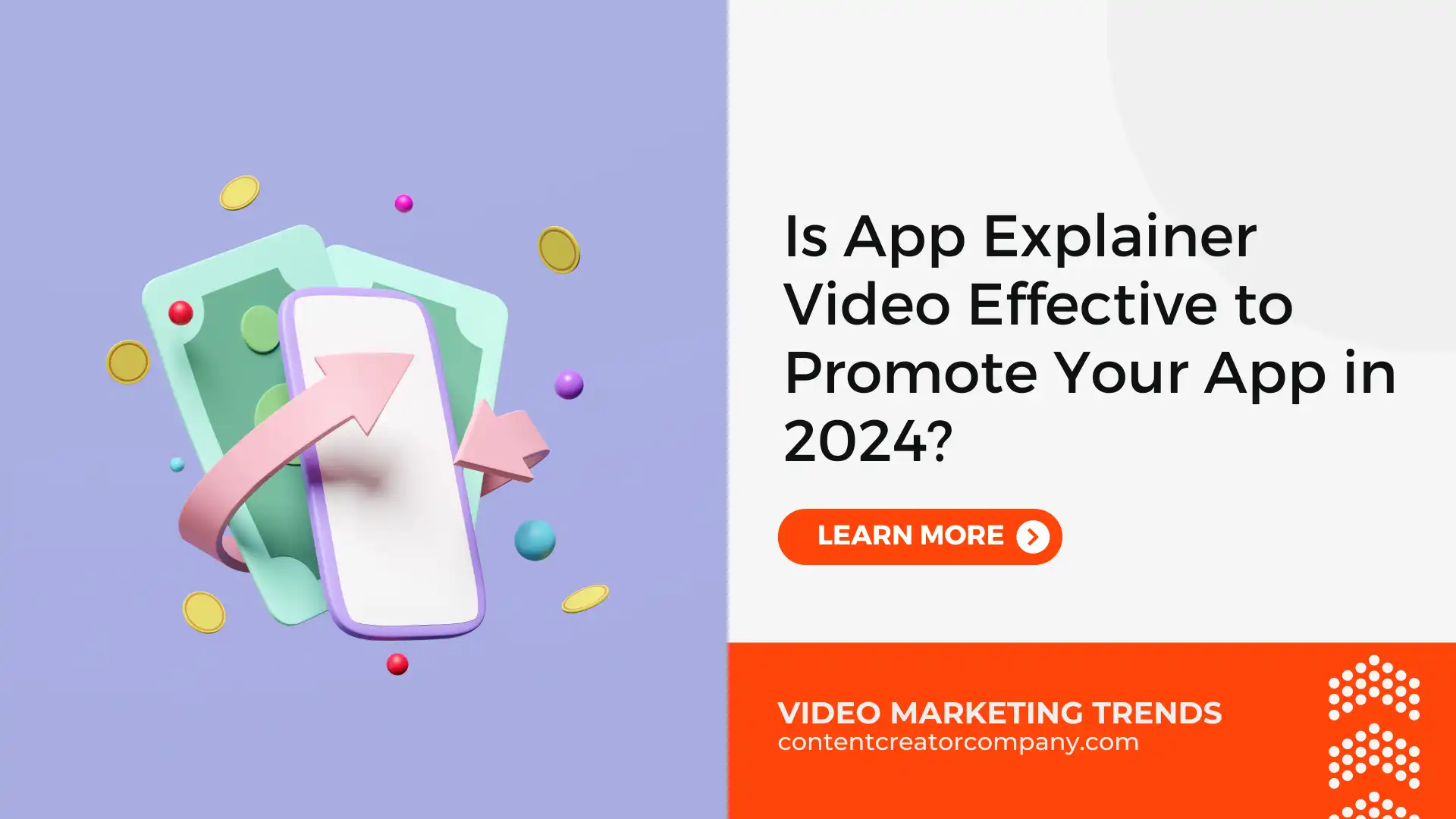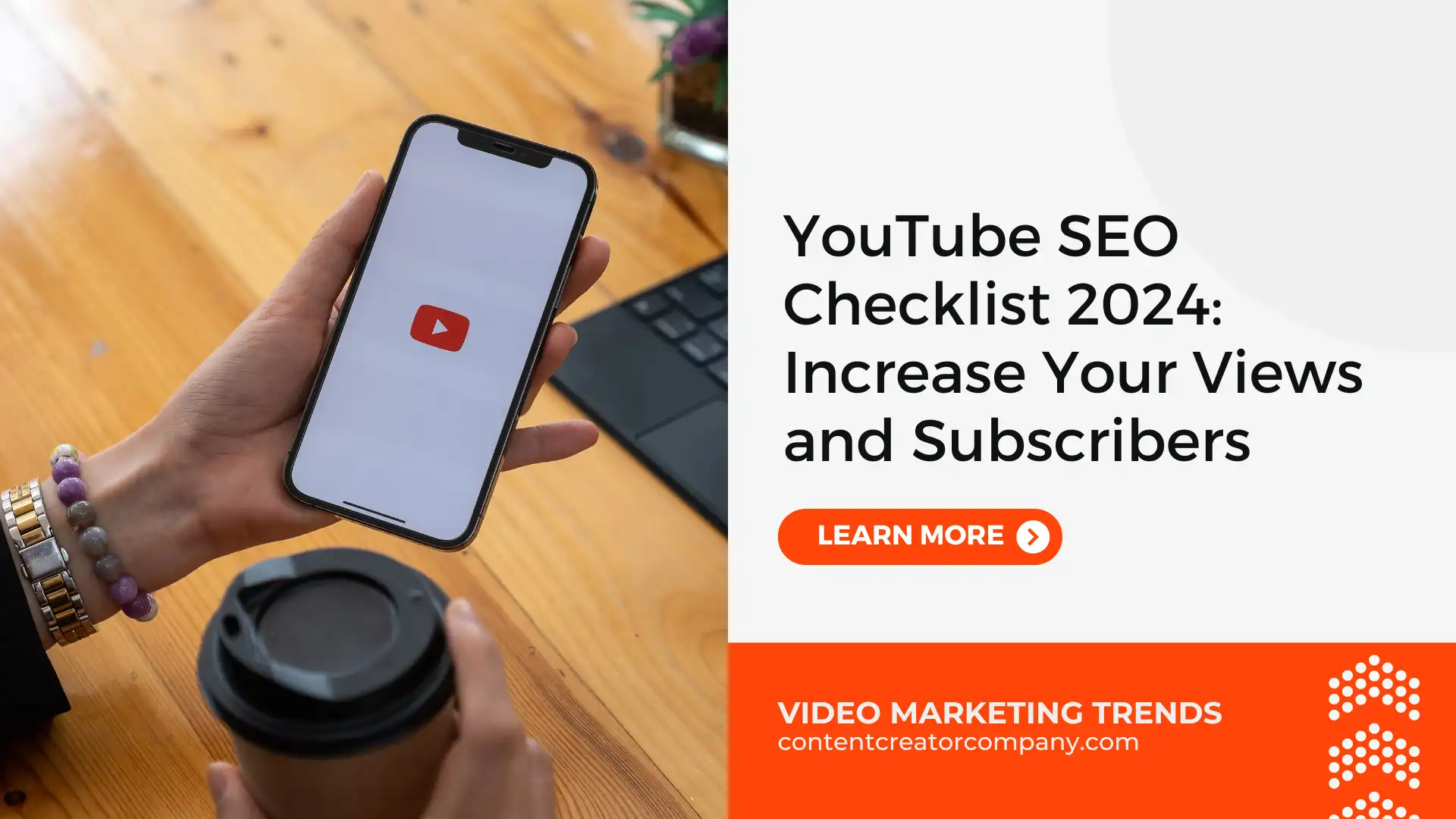
Video marketing has emerged as a powerful tool for businesses to connect with their target audience, drive engagement, and increase brand awareness. With the exponential growth of online video consumption across various platforms, including social media, websites, and streaming services, video has become a cornerstone of digital marketing strategies.
Its ability to convey information quickly, evoke emotions, and capture attention makes it an indispensable asset for brands looking to stand out in a crowded digital landscape.
Video marketing is constantly evolving, driven by changes in technology, consumer behavior, and industry innovations. What worked yesterday may not necessarily be effective tomorrow.
Therefore, it’s crucial for businesses to stay abreast of the latest video marketing trends and adapt their strategies accordingly.
From interactive content to immersive experiences, the landscape of video marketing is continually evolving, offering new opportunities for brands to engage with their audience in creative and impactful ways.
In this article, we’ll explore 10 video marketing trends that you should follow in 2024 to stay ahead of the curve and maximize the effectiveness of your digital marketing efforts.
Trend 1: Interactive Video Content
Interactive video content involves user engagement through interactive elements such as clickable hotspots, quizzes, polls, and branching narratives. Examples include interactive product demos, immersive storytelling experiences, and choose-your-own-adventure-style videos. These interactive elements allow viewers to actively participate in the content, leading to a more engaging and personalized viewing experience.
Interactive videos captivate viewers’ attention by encouraging active participation, resulting in higher engagement rates and longer viewing times. By offering viewers control over their viewing experience, interactive videos create a sense of immersion and involvement, leading to increased brand recall and message retention. Additionally, interactive elements provide valuable data insights into viewers’ preferences and behaviors, enabling brands to tailor future content and marketing strategies more effectively.
Various tools and platforms facilitate the creation of interactive video content, ranging from specialized interactive video platforms like HapYak and Wirewax to integrated solutions offered by video hosting platforms such as YouTube and Vimeo. These tools provide features for adding interactive elements, tracking viewer interactions, and analyzing performance metrics. Additionally, emerging technologies like augmented reality (AR) and virtual reality (VR) offer new possibilities for creating immersive and interactive video experiences.
Trend 2: Shoppable Videos
Shoppable videos combine the power of video content with direct sales opportunities, allowing viewers to make purchases directly within the video player. By embedding clickable product links or interactive overlays, shoppable videos enable seamless transitions from inspiration to purchase, making them an effective tool for driving ecommerce sales and enhancing the shopping experience.
Successful shoppable video campaigns leverage compelling storytelling and seamless integration of product placements to drive conversions. Examples include fashion brands using shoppable lookbooks and tutorials, beauty companies showcasing makeup tutorials with clickable product links, and home decor retailers featuring room makeover videos with purchasable items.
Major social media platforms and ecommerce platforms are integrating shoppable features directly within video content, enabling brands to reach and convert audiences more effectively. For instance, Instagram’s “Shoppable Posts” feature allows businesses to tag products in their videos, while platforms like TikTok and YouTube are experimenting with in-video shopping capabilities. Additionally, ecommerce platforms like Shopify and Magento offer plugins and integrations for embedding shoppable videos on product pages and storefronts.
Trend 3: Personalized Video Experiences
Personalization plays a crucial role in engaging modern consumers who expect tailored experiences and relevant content. Personalized video experiences enable brands to connect with their audience on a more individual level, increasing engagement, loyalty, and ultimately, conversions. By leveraging data insights and segmentation strategies, brands can deliver personalized video content that resonates with each viewer’s interests, preferences, and behaviors.
Techniques for creating personalized video content include dynamically generated video ads, personalized product recommendations, and targeted messaging based on viewer demographics and past interactions. AI-powered video personalization platforms analyze viewer data in real-time to deliver customized video experiences, such as personalized video emails, retargeting campaigns, and interactive video greetings.
Case studies demonstrate the effectiveness of personalized video campaigns in driving engagement and conversions across various industries. Examples include personalized video emails from ecommerce brands showcasing recommended products based on past purchases, personalized video ads from streaming services promoting content tailored to viewer preferences, and personalized video messages from B2B companies addressing individual pain points and challenges.
Trend 4: Short-Form Video Content
Short-form video platforms like TikTok, Instagram Reels, and Snapchat have experienced explosive growth in recent years, capturing the attention of younger audiences and reshaping content consumption habits. These platforms prioritize bite-sized, visually engaging videos that are perfect for capturing fleeting moments and sparking creativity.
Creating engaging short-form video content requires a balance of creativity, authenticity, and relevance. Brands can leverage trending challenges, hashtags, and music to increase visibility and reach on short-form video platforms. Additionally, storytelling techniques such as humor, emotion, and suspense can captivate viewers and encourage sharing and interaction.
Brands can leverage short-form videos to humanize their brand, showcase product features, and connect with their audience on a personal level. Whether it’s behind-the-scenes glimpses, product tutorials, or customer testimonials, short-form videos offer a versatile format for conveying brand messages and driving engagement. Additionally, paid advertising options on short-form video platforms allow brands to reach targeted audiences and drive conversions effectively.
Trend 5: Live Video Streaming
Live streaming has emerged as a popular marketing tool for brands to connect with their audience in real-time, foster authentic interactions, and drive engagement. Whether it’s product launches, Q&A sessions, or behind-the-scenes tours, live video streaming allows brands to showcase their personality, expertise, and authenticity, resulting in increased trust and loyalty from viewers.
Live video streaming offers several benefits for brands, including immediate feedback, real-time engagement, and increased reach. For audiences, live streaming provides an opportunity to interact with their favorite brands, influencers, and peers, fostering a sense of community and connection. Additionally, live videos often generate higher levels of engagement and viewership compared to pre-recorded content, making them a valuable asset for driving brand awareness and loyalty.
To maximize engagement during live video broadcasts, brands should plan and promote their streams in advance, encourage audience participation through polls, comments, and Q&A sessions, and respond to viewer comments and questions in real-time. Additionally , brands can collaborate with influencers or industry experts to co-host live streams, cross-promote their broadcasts on multiple platforms, and repurpose live content into on-demand videos for prolonged engagement.
Trend 6: 360-Degree and VR Videos
360-degree and virtual reality (VR) videos provide immersive experiences that transport viewers to new environments and enable them to explore and interact with their surroundings. Whether it’s touring a virtual showroom, experiencing a live concert, or embarking on a virtual adventure, these technologies offer unparalleled levels of immersion and engagement.
360-degree and VR videos have applications across various industries, including travel and tourism, real estate, entertainment, and education. Brands can use these immersive technologies to showcase destinations, properties, products, and experiences in a more compelling and interactive manner, leading to increased interest and conversion rates.
Several tools and technologies facilitate the creation and distribution of 360-degree and VR videos, ranging from specialized cameras and editing software to dedicated VR platforms and apps. Brands can leverage these tools to produce high-quality immersive content and distribute it across VR headsets, mobile devices, and web browsers, reaching audiences wherever they are.
Trend 7: User-Generated Content (UGC) Campaigns
User-generated content (UGC) refers to content created and shared by consumers, fans, or brand advocates, rather than the brand itself. UGC plays a powerful role in building brand authenticity, trust, and credibility, as it provides genuine insights into the customer experience and fosters a sense of community and belonging among followers.
Brands across industries have successfully leveraged UGC campaigns to amplify their reach, drive engagement, and increase brand loyalty. Examples include hashtag challenges on social media platforms like Instagram and TikTok, user-submitted photo contests, and customer testimonial videos shared on brand websites and social channels.
To encourage UGC participation, brands can incentivize content creation through contests, giveaways, and rewards programs. Additionally, brands can actively engage with their audience, respond to user-generated content, and showcase it prominently on their channels to demonstrate appreciation and recognition. By incorporating UGC into their video marketing strategies, brands can tap into the power of authentic storytelling and peer recommendations to drive conversions and advocacy.
Trend 8: Storytelling and Narrative-driven Videos
Storytelling is a fundamental aspect of effective video marketing, as it allows brands to connect with their audience on an emotional level, convey their values and mission, and differentiate themselves from competitors. Compelling narratives evoke emotions, inspire action, and leave a lasting impression on viewers, making storytelling an essential tool for building brand affinity and loyalty.
Effective narrative-driven videos incorporate elements such as compelling characters, relatable conflicts, and meaningful resolutions to engage viewers and elicit an emotional response. Whether it’s sharing a founder’s journey, highlighting customer success stories, or championing a cause, brands can use storytelling to humanize their brand, inspire trust, and drive action.
Brands can incorporate storytelling techniques into their videos and campaigns by structuring narratives around key themes, values, or milestones. From creating episodic content that unfolds over time to leveraging visual metaphors and symbolism, storytelling allows brands to communicate complex ideas and messages in a memorable and impactful way. By weaving narratives into their video marketing strategies, brands can forge deeper connections with their audience and drive meaningful engagement and action.
Trend 9: Sustainability and Social Responsibility in Video Marketing
Consumers are increasingly prioritizing sustainability and social responsibility when making purchasing decisions, driving demand for environmentally conscious brands that prioritize ethical and eco-friendly practices. Sustainable video marketing strategies not only align with consumer values but also contribute to positive brand perception and reputation.
Brands across industries are incorporating sustainability themes into their video marketing efforts, showcasing initiatives such as eco-friendly products, carbon-neutral operations, and community engagement projects. Examples include documentaries highlighting sustainable sourcing practices, behind-the-scenes videos showcasing ethical production methods, and educational content raising awareness about environmental issues.
To authentically address sustainability in video content, brands should align their messaging with their values and demonstrate tangible actions and commitments towards sustainability. This may include highlighting sustainable product features, showcasing eco-friendly packaging, or sharing stories of social impact and environmental stewardship. By transparently communicating their sustainability efforts, brands can build trust, loyalty, and goodwill with environmentally conscious consumers.
Trend 10: Data-Driven Video Marketing
Data analytics play a critical role in informing video marketing strategies by providing actionable insights into audience preferences, behavior patterns, and content performance. By analyzing metrics such as view counts, engagement rates, and conversion rates, brands can identify trends, optimize content, and allocate resources more effectively to achieve their marketing objectives.
Brands can optimize their video content based on data insights by experimenting with different formats, lengths, and messaging strategies to determine what resonates most with their audience. A/B testing, audience segmentation, and heat mapping are examples of techniques used to refine video content and maximize its impact on viewers.
A variety of tools and metrics are available for measuring the effectiveness of video marketing campaigns, ranging from basic analytics provided by video hosting platforms to advanced data visualization and attribution models. Key metrics to track include views, watch time, engagement, click-through rates, and conversion rates, which provide valuable insights into campaign performance and ROI.
The landscape of video marketing is evolving rapidly, driven by advancements in technology, changes in consumer behavior, and shifting industry trends. The 10 video marketing trends outlined in this article represent opportunities for brands to innovate, engage, and differentiate themselves in a competitive market.
Staying updated with emerging trends is essential for brands to remain competitive and relevant in the ever-changing landscape of video marketing. By embracing new technologies, experimenting with innovative formats, and adapting to shifting consumer preferences, brands can position themselves for success and stay ahead of the curve in 2024 and beyond.
We encourage brands to incorporate these trends into their video marketing strategies to drive engagement, foster connections, and achieve their business objectives in 2024. Whether it’s embracing interactive content, leveraging user-generated content, or addressing sustainability themes, the possibilities for innovation and creativity are endless.





